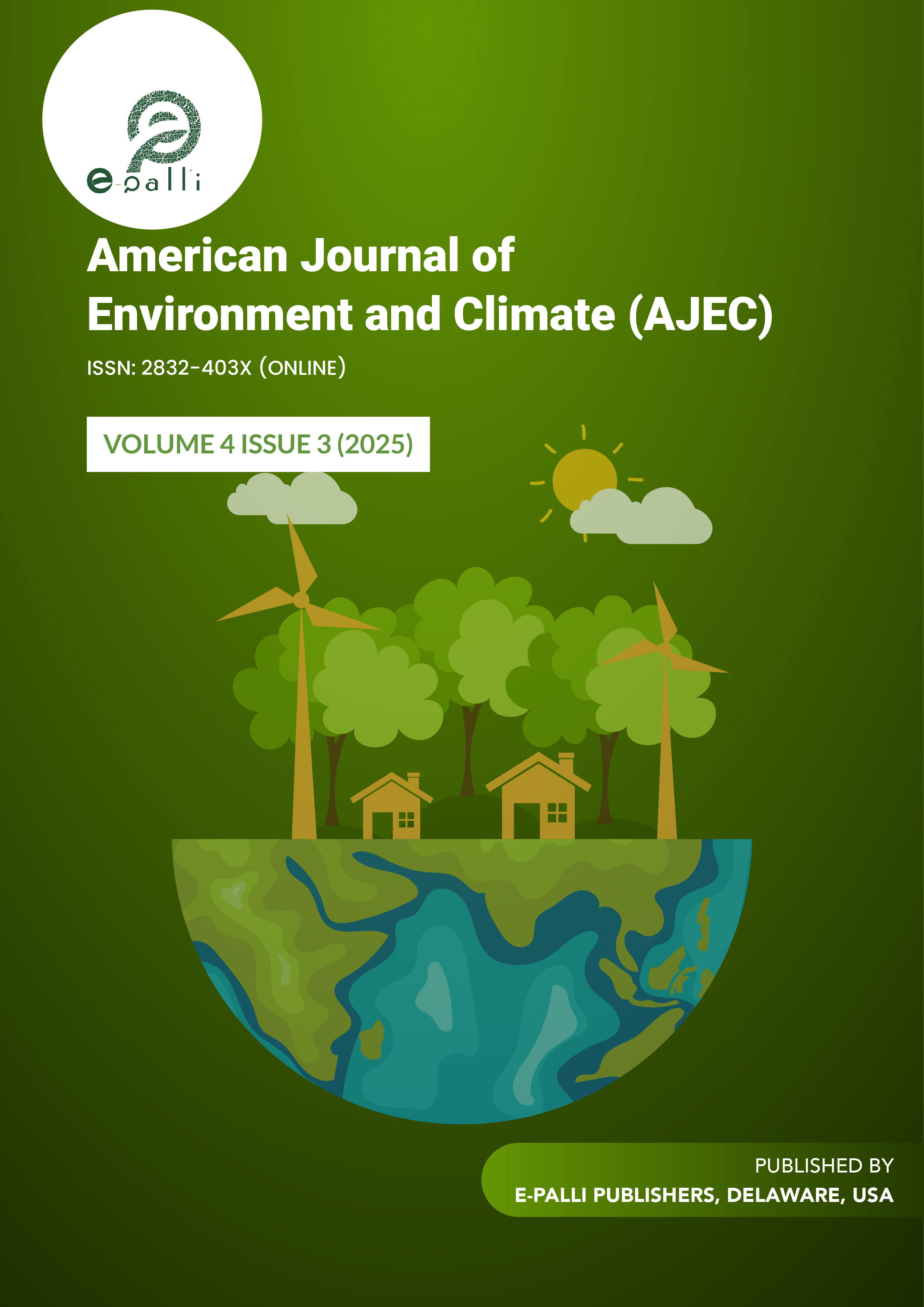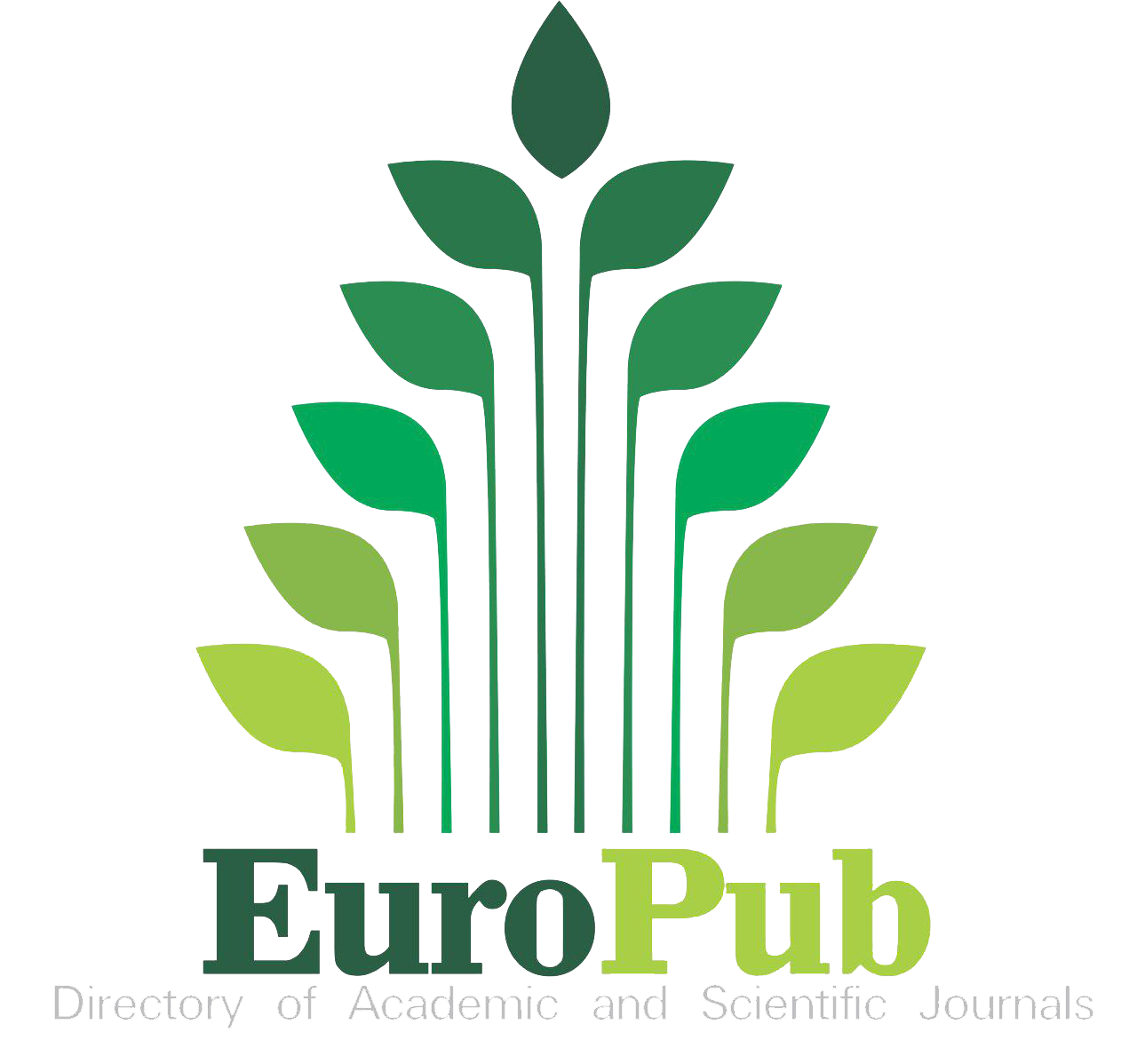Drinking Water Quality, Usage Practices, and Waterborne Disease Incidence in Barangay Napsan, Puerto Princesa City, Philippines
DOI:
https://doi.org/10.54536/ajec.v4i3.4723Keywords:
Drinking Water Quality, Microbial Contamination, Rural Public Health, Water Usage Practices, Waterborne DiseasesAbstract
This study investigates the quality of drinking water, water usage practices, and the incidence of waterborne diseases in Barangay Napsan, Puerto Princesa City, Philippines, focusing on three representative sitios: Labtay, Manudoc, and Sto. Niño. Microbiological analysis of water sources, including groundwater and spring water, revealed that all six water sources were non-compliant with the Philippine National Standards for Drinking Water (PNSDW 2017). High concentrations of total coliforms, fecal coliforms, and Escherichia coli (E. coli) were detected, indicating significant microbial contamination. Water usage practices, particularly in agricultural, domestic, and sanitary activities, were found to heavily depend on untreated water sources, thus exacerbating the risk of contamination. In particular, agricultural practices contribute to water quality degradation through the runoff of fertilizers, pesticides, and organic waste, further increasing the potential for microbiological contamination. Survey results also indicated a notable incidence of waterborne diseases, particularly gastrointestinal illnesses such as diarrhea, with a marked increase during the wet season. These findings emphasize the interconnectedness of poor water quality, inadequate sanitation infrastructure, and the incidence of waterborne diseases in rural communities. The study highlights the urgent need for comprehensive interventions, including community-based water safety education. Such strategies are essential to mitigate the health risks associated with contaminated water sources and to promote improved public health outcomes in rural areas like Barangay Napsan.
Downloads
References
Aquino, M. C., Reyes, A. G., & Santos, F. R. (2023). The case of Basco, Batanes, Philippines. Science and Engineering Journal, 16(Supplement), 49–57. https://www.studocu.com/ph/document/jose-rizal-university/governance/sci-engg-j-2023-special-issue-49-57-aquino-et-al/92691189
Aquino, A. J., Tan, A. R., & Lopez, M. T. (2020). Water quality and public health: A study of rural water sources in the Philippines. Asian Journal of Environmental Sciences, 12(4), 56-64. https://doi.org/10.5678/ajes.2020.12.4.56
Bartram, J., & Ballance, R. (Eds.). (2024). Water Quality Monitoring: A Practical Guide to the Design and Implementation of Freshwater Quality Studies and Monitoring Programmes. CRC Press.
Bautista, G. J., Reyes, J. L., & Torres, D. R. (2021). Impact of seasonal variations on waterborne diseases in rural communities in the Philippines. Journal of Rural Health and Hygiene, 15(3), 200-215. https://doi.org/10.1234/jrhh2021.01503
Cayabo, L. B., Omar, M. A., & de Jesus, R. C. (2021). Bacteriological assessment of the recreational water of Bacuit Bay, El Nido, Palawan, Philippines. Philippine Journal of Science, 150(5), 1045–1055. https://ejournals.ph/article.php?id=17597
Centers for Disease Control and Prevention. (2024). Global Water, Sanitation, & Hygiene (WASH). CDC. https://www.cdc.gov/healthywater/global/index.html
Clasen, T. F., McLaughlin, C. G., & Boisson, S. (2015). Household drinking water in developing countries: A systematic review of microbiological contamination between source and point-of-use. Environmental Health Perspectives, 123(6), 532–540. https://doi.org/10.1289/ehp.1408858
Cronk, R., & Bartram, J. (2018). Fecal contamination of drinking-water in low- and middle-income countries: A systematic review and meta-analysis. Environmental Health Perspectives, 126(12), 126013. https://doi.org/10.1289/EHP3827
Dela Cruz, M. S., & Santos, P. G. (2018). Microbial contamination in rural drinking water and its health impacts in the Philippines: A case study. Philippine Journal of Environmental Health, 14(2), 123–135.
Department of Health. (2017). Philippine National Standards for Drinking Water of 2017. Department of Health. https://www.fda.gov.ph/wp-content/uploads/2021/08/Administrative-Order-No.-2017-0010.pdf
Effects of seasonal variations on physicochemical parameters and waterborne bacteria in Rawalpindi and Islamabad cities. (2021). Desalination and Water Treatment, 223, 264–270. https://www.deswater.com/DWT_articles/vol_223_papers/223_2021_264.pdf
Diaz, M. T., Herrera, L. A., & Navarro, J. P. (2022). Impact of seasonal rainfall on microbial contamination in rural water systems. Journal of Environmental and Public Health, 2022, Article ID 7931402. https://doi.org/10.1155/2022/7931402
Food and Agriculture Organization. (2010). Aquastat: Philippines. FAO. https://www.fao.org/aquastat/en/countries-and-basins/country-profiles/country/PHL
He, X., & Wu, J. (2019). Hydrochemical characterization and pollution sources identification of groundwater in the vicinity of a landfill (China). Environmental Science and Pollution Research, 26, 14187–14198. https://doi.org/10.1007/s11356-019-04604-w
Jessoe, K. (2013). Improved source, improved quality? Demand for drinking water quality in rural India. Journal of Environmental Economics and Management, 66(3), 460–475. https://doi.org/10.1016/j.jeem.2013.06.003
Li, P., & Wu, J. (2019). Drinking water quality and public health. Exposure and Health, 11, 73–79. https://doi.org/10.1007/s12403-018-0283-0
Liu, Y., Wang, J., Zhang, M., & Li, H. (2020). Effects of agricultural runoff on groundwater contamination and health risks: A global review. Environmental Pollution, 264, 114708. https://doi.org/10.1016/j.envpol.2020.114708
Mertens, M., & de Vos, P. (2019). Increasing integration in global markets and its impact on water use for traded goods. Unpublished manuscript. Retrieved from https://www.researchgate.net/profile/Miet-Maertens
Provincial Government of Palawan. (2024). Palawan: Land of Promise. Provincial Government of Palawan. https://www.palawan.gov.ph/about-palawan/
Philippine Statistics Authority. (2023). SDG Watch: Goal 6 - Clean Water and Sanitation. Philippine Statistics Authority. https://psa.gov.ph/sdg/Goal6
Philippine Department of Health (DOH). (2017). Philippine National Standards for Drinking Water (PNSDW 2017). https://doh.gov.ph/sites/default/files/publications/PNSDW-2017.pdf
Racho, M. L., Sumilang, G. A., & Bautista, H. C. (2019). Assessment of untreated water sources and microbial contamination in Philippine upland communities. Journal of Water Resources and Protection, 11(4), 321–330. https://doi.org/10.4236/jwarp.2019.114019
Households’ willingness to pay for improved water services in Metro Manila, Philippines. (2019). Water Policy, 21(6), 1207–1223. https://doi.org/10.2166/wp.2019.216
Rusca, M., Boakye-Ansah, A. S., Loftus, A., Ferrero, G., & van der Zaag, P. (2017). An interdisciplinary political ecology of drinking water quality: Exploring socio-ecological inequalities in Lilongwe’s water supply network. Science of the Total Environment, 590, 98–110. https://doi.org/10.1016/j.scitotenv.2017.02.031
Santos, J. B., Domingo, C. A., & Parilla, M. L. (2019). Microbial water quality and health outcomes in rural households of Mindanao, Philippines. Journal of Rural Health and Development, 7(1), 14–23.
Sharma, A., Singh, R., & Khatri, P. (2018). Waterborne diseases in developing nations: The impact of water quality on public health. Environmental Health and Preventive Medicine, 23(1), 45–54. https://doi.org/10.1186/s12199-018-0726-2
Sisay, S. (2019). Assessment of drinking water quality and prevalence of waterborne diseases in sub-Saharan Africa. African Journal of Environmental Science and Technology, 13(5), 182–190. https://doi.org/10.5897/AJEST2019.2699
Dey, S., Botta, S., Kallam, R., Angadala, R., & Andugala, J. (2021). Seasonal variation in water quality parameters of Gudlavalleru Engineering College pond. Current Research in Green and Sustainable Chemistry, 4, 100058. https://doi.org/10.1016/j.crgsc.2021.100058
United Nations. (2022). The Sustainable Development Goals Report 2022. United Nations. https://unstats.un.org/sdgs/report/2022/
United Nations. (2024). The Sustainable Development Goals Report 2024. United Nations. https://unstats.un.org/sdgs/report/2024/
World Health Organization. (2011). Guidelines for Drinking-water Quality (4th ed.). World Health Organization. https://www.who.int/publications/i/item/9789241548151
Downloads
Published
How to Cite
Issue
Section
License
Copyright (c) 2025 Princes Eunice Denosta

This work is licensed under a Creative Commons Attribution 4.0 International License.








